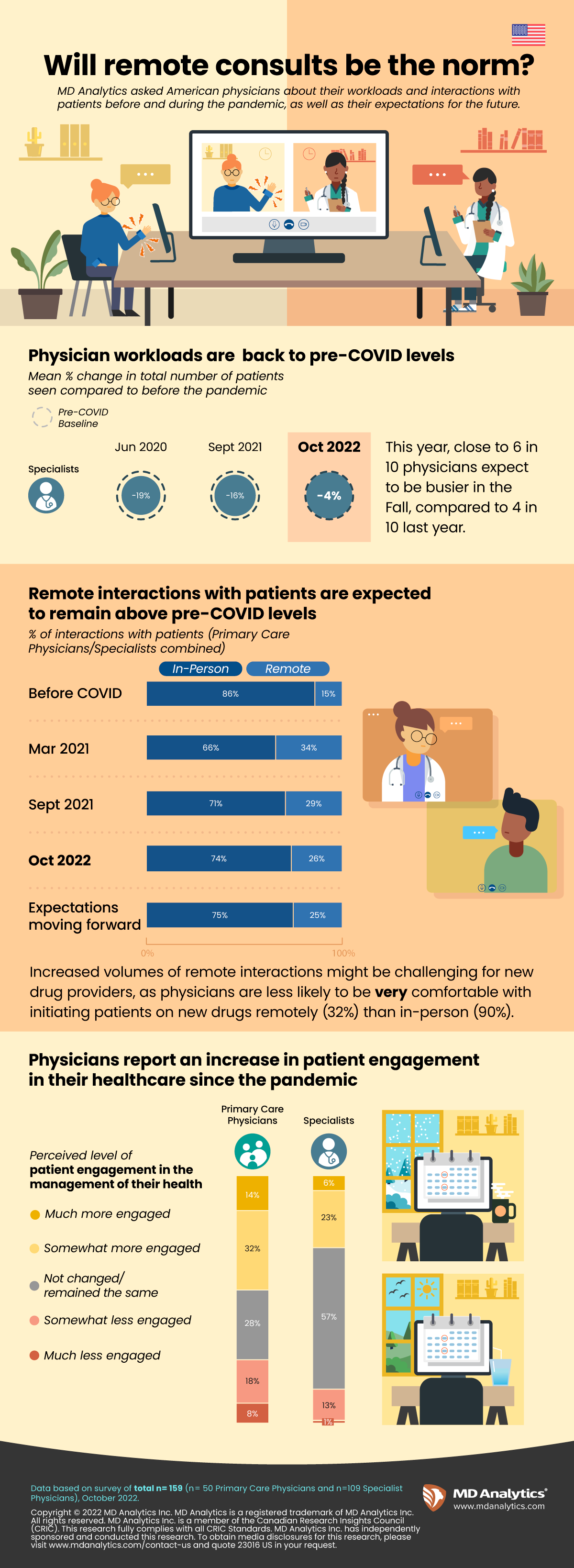We have all experienced changes in our work since COVID-19 – some of these changes are certainly for the better. Physicians are no different and have experienced significant changes since the start of the pandemic. We surveyed 159 physicians in the U.S. (50 primary care physicians and 109 specialists) to see how things compare to pre-pandemic for them. Workloads initially went down for physicians as patients were hesitant to come into the office and postponed appointments and regular screenings. Both primary physicians and specialists think their workloads are now close to pre-pandemic levels and expected to further increase in the coming year.
Read More
Remote interactions with patients are here to stay. Before COVID-19, only 15% of interactions were remote. Since March 2021, we have seen higher percentages of remote interactions (up to 34%). We seem to have reached the “new normal” with current remote interactions at 26% and future remote interactions expected to be 25% of total patient interactions. While physicians and patients alike likely see benefits in having remote interactions as an option, it does present some challenges as physicians are much more comfortable initiating patients on new drugs in person.
Almost 50% of GPs and almost 30% of specialists say their patients are more or much more engaged in their health. This may reflect a change in what is important to patients or a greater emphasis on health in general since COVID-19. Or it may reflect patients having more time to focus on their health with the changes in other aspects of their lives during COVID-19. Whatever the reason, this increased level of engagement could be useful in ensuring patients seek care when needed and receive a diagnoses sooner.
Key takeaways
- Are physician workloads back to pre-COVID-19 levels?
- How has the format of physician-patient interactions changed since COVID-19?
- How would physicians prefer to interact with patients moving forward?
- Have physicians noticed a shift in patient engagement lately?

